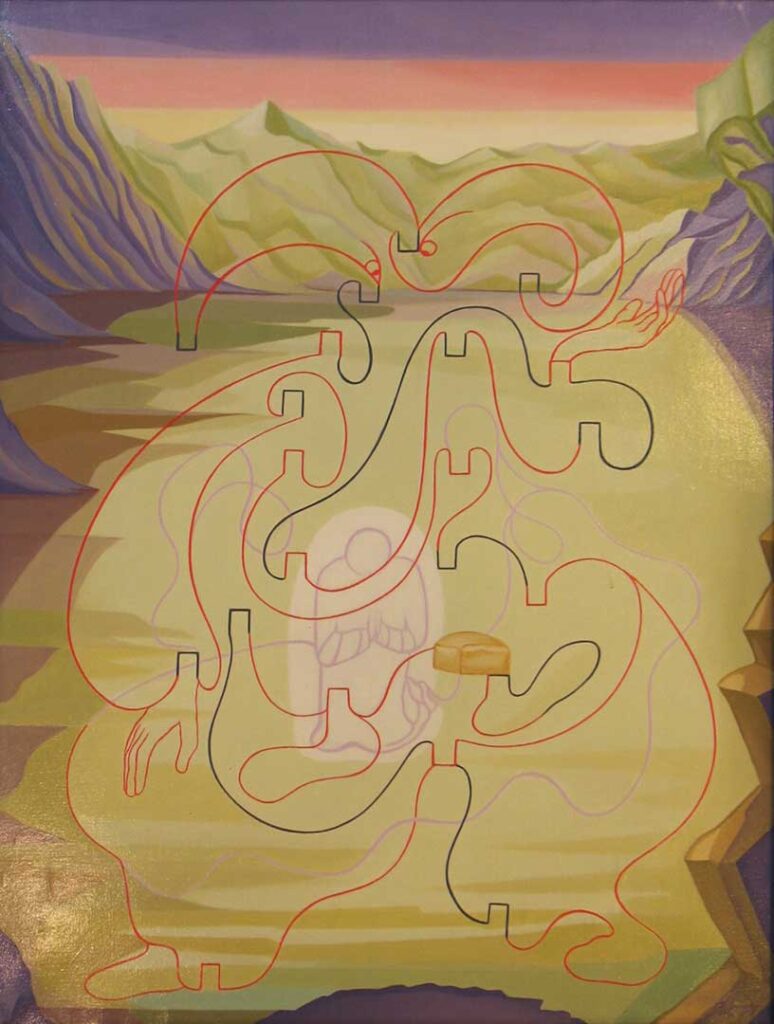His Story
Epilogue
The work of Quinton Oliver Jones was little known in his home community although he was an almost daily sight in his walks around town. He painted to express his own creative energy. He found his subject matter from a classical education: Shakespeare, Greek mythology, Christianity, history, and also from his observations of contemporary culture and world affairs. We are especially drawn into his work by his imagination together with his dynamic use of color and space. He had little interest in painting from life; rather he sought to convey emotions. When we examine each of the 380 carefully constructed paintings which he bequeathed us, we find nothing extraneous. Rather, his compositions are aimed at the communication of an essential feeling.
Quinton’s personal values were independence, self-reliance and privacy, which guided his choices in life and in his art. These guiding values were costly, however. He lived a life of loneliness, isolation, and extreme frugality. He did not paint for an audience, which gave him the freedom to work solely within his own vision. He cannot be pinned down to a particular style even though he knew all the “isms” of what we call “modern art.” Quinton drew only upon that which he needed to fulfill his often enigmatic compositions.

From our current perspective, we can look back and appreciate that he had the opportunity to explore and to respond to the complexities of an entire century. His focused commitment to the emotional value of his work was his strong point. He became an active participant in twentieth-century introspection. In a sense, he became an unwitting interpreter of those “modern” attitudes. His avant-garde freedom of expression allowed Quinton to break the long-established rules of composition. There was no constraint to depict the “true” or the “real.” The emotional impact became the primary subject of the canvas.
We invite you to be drawn into his paintings and join him on his unique creative journey.
— Cornelia Jones Gephart